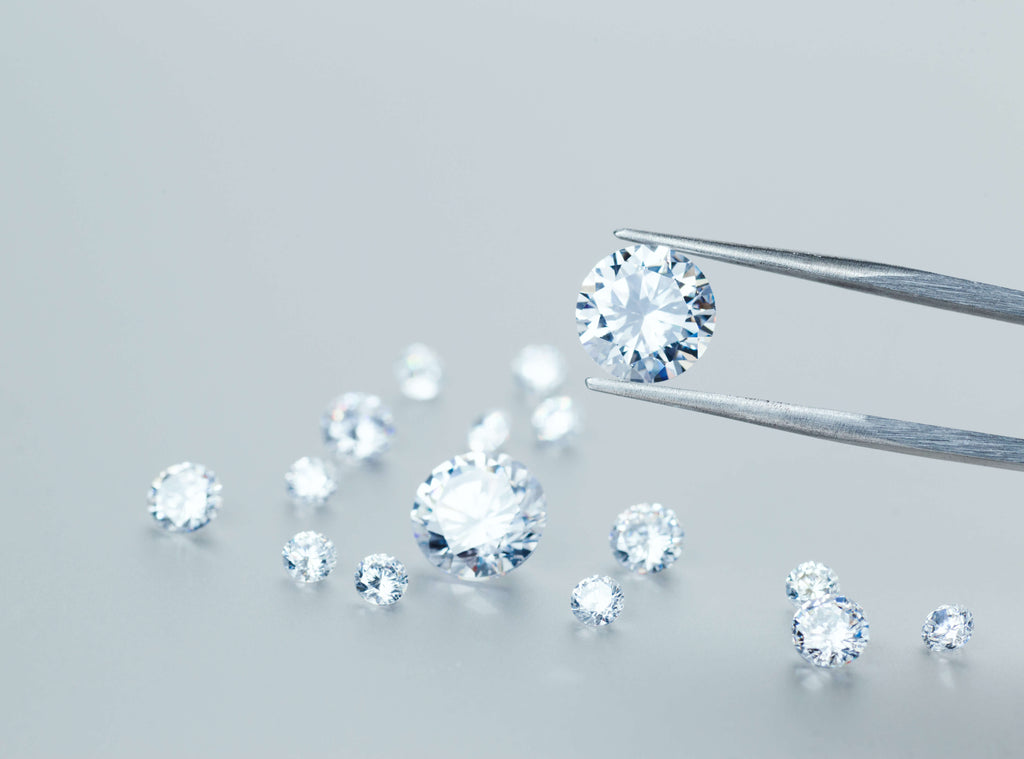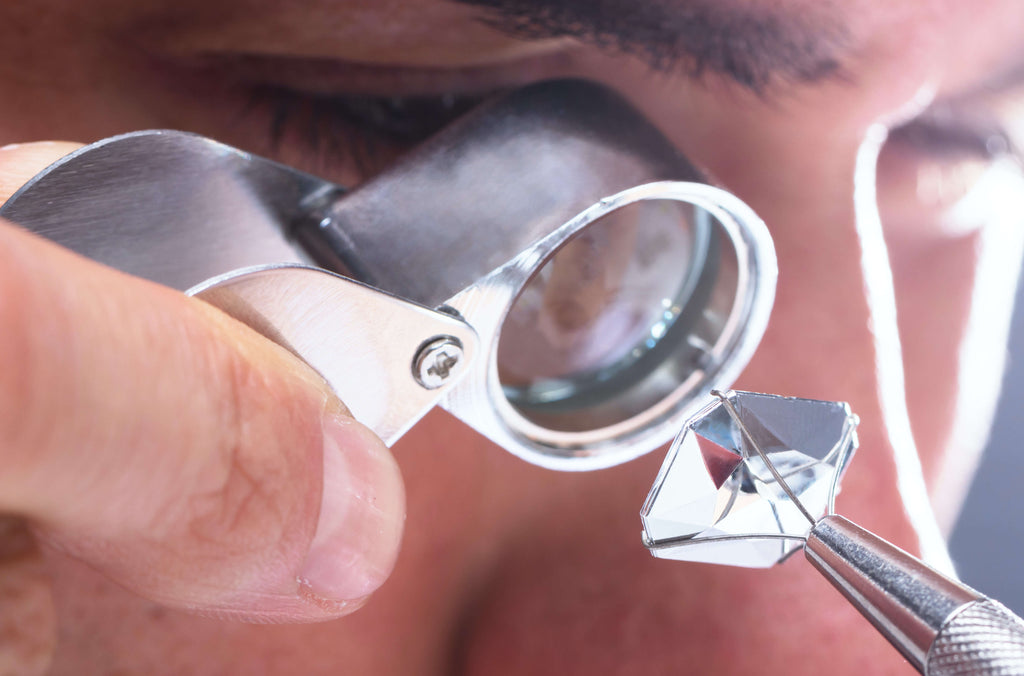
When embarking on the journey to purchase diamond jewelry, understanding the markers of quality is paramount. Whether you're selecting a timeless engagement ring, a stunning necklace, or elegant earrings, the allure of diamonds lies not just in their beauty but in their complex characteristics that determine their overall quality and value. This comprehensive guide will navigate you through the essential aspects of diamond quality and the characteristics of a diamond, focusing on the universally acclaimed 4 C's—Cut, Color, Clarity, and Carat Weight. Additionally, we'll highlight why Trabert Goldsmiths is your go-to destination for exquisite diamond jewelry, offering a unique collection for those in the San Francisco Bay Area and beyond.
Understanding Diamond Quality: The 4 C's
Diamond quality is a multifaceted concept that encompasses various attributes, each contributing to the stone's overall beauty and value. The characteristics of a diamond are pivotal in determining its quality. These characteristics not only influence the appearance of the diamond but also affect its price. When assessing the quality of diamond jewelry, it's important to consider the diamond's color, clarity, cut, and carat weight—collectively known as the 4 C's. However, understanding these attributes requires a closer look into what each of them entails.
Cut: The Art and Science of Brilliance
The cut of a diamond goes beyond its shape, encompassing the precision of its facets, symmetry, and proportions. A well-cut diamond reflects and refracts light, showcasing its fire, brilliance, and scintillation. The quality of the cut determines how a diamond captures light and transforms it into dazzling displays of beauty. From the classic round brilliant to the elegant emerald cut, the craftsmanship behind each cut plays a pivotal role in a diamond's overall appearance and value.
Color: The Subtle Shades of Excellence
Color in diamonds refers to the absence of color, graded on a scale from D (colorless) to Z (light color). The closer a diamond is to colorless, the more desirable and valuable it is considered. Colorless diamonds allow the most light to pass through, resulting in superior brilliance. While differences between adjacent color grades can be subtle, they significantly impact a diamond's price and allure.
Clarity: The Purity of Perfection
Clarity assesses the absence of inclusions and blemishes within or on the surface of a diamond. The clarity scale ranges from Flawless (FL) to Included (I), with several grades in between. Flawless diamonds, free from imperfections even under 10x magnification, are exceedingly rare and prized. Most diamonds contain natural inclusions, but the visibility, number, and placement of these imperfections can affect a diamond's clarity and, consequently, its value. Diamonds with minimal or no visible inclusions are considered higher quality, as they maintain the stone’s integrity and enhance its ability to reflect light.
Carat Weight: A Measure of Prestige
Carat weight measures a diamond's size and contributes significantly to its overall value. However, it's important to note that two diamonds of the same carat weight can vary widely in value depending on their cut, color, and clarity. A larger diamond with poor cut, color, and clarity may be less valuable than a smaller diamond with exceptional characteristics in these areas. Thus, while carat weight is a key factor, it should be considered alongside the other Cs.
Beyond the 4 C's: Additional Characteristics of Quality Diamond Jewelry
While the 4 C's offer a foundational understanding of diamond quality, several other factors contribute to the allure and value of diamond jewelry.
Symmetry and Polish
Symmetry refers to the alignment and proportion of a diamond's facets, while polish describes the smoothness of its exterior surfaces. Both characteristics influence a diamond's ability to reflect light and generate brilliance, affecting its visual appeal and quality.
Fluorescence
Fluorescence is the reaction of diamonds to ultraviolet (UV) light, causing them to glow in various colors. While fluorescence can enhance the color appearance of some diamonds, it may detract from the value of others, particularly if the glow is very strong or if the diamond is of a higher color grade.
Certification
A diamond certificate, issued by a reputable gemological laboratory, provides an unbiased assessment of a diamond's characteristics and quality. This document details the 4 C's, along with other measurements and features, offering assurance of the diamond's authenticity and value.
Selecting Quality Diamond Jewelry: A Practical Approach
When selecting diamond jewelry, it's important to balance the 4 C's according to your preferences and budget. For example, some may prioritize carat weight over color, while others may prefer a higher cut quality for enhanced brilliance. Understanding the trade-offs between these characteristics can help you make informed decisions and select a piece that meets your desires and expectations.
It's also vital to purchase from reputable jewelers who provide detailed information about their diamonds, including GIA certificates or reports from other reputable gemological laboratories. These documents offer an unbiased assessment of a diamond's characteristics and are a testament to its quality.

Practical Tips for Diamond Buyers
When you're ready to purchase a diamond, keep these tips in mind:
- View the diamond in different lighting conditions, including natural daylight and store lighting.
- Examine the diamond loose, if possible, since settings can mask certain aspects of its appearance.
- Request to see the diamond under a jeweler's loupe or microscope to better understand its unique characteristics.
Trabert Goldsmiths: Your Destination for Quality Diamond Jewelry
Understanding diamond quality and the characteristics of a diamond is crucial in selecting jewelry that truly resonates with personal taste and lasts a lifetime. By familiarizing yourself with the 4 C's and considering additional factors such as symmetry, polish, fluorescence, and certification, you can navigate the world of diamonds with confidence.
At Trabert Goldsmiths, nestled in the vibrant heart of the San Francisco Bay Area, we pride ourselves on offering an exquisite collection of modern and vintage diamond jewelry. Each piece in our collection is curated with an eye for exceptional diamond quality and the unique characteristics that make a diamond truly stand out.
We invite those living in and around the San Francisco Bay Area to visit our storefront and experience the beauty and craftsmanship of our diamond jewelry firsthand. For those unable to visit, our online collection offers a convenient way to explore our offerings, complete with detailed descriptions and images that capture the essence of each piece.
FAQs
Can two diamonds of the same carat weight have different prices?
Yes, two diamonds of the same carat weight can vary significantly in price due to differences in their cut, color, and clarity. A diamond with a higher quality cut, better color grade, and fewer inclusions will typically be more expensive.
What does the term "fire" in diamonds refer to?
"Fire" refers to the dispersion of light into the colors of the spectrum, seen as flashes of color in the diamond. It's a quality that is greatly affected by the cut of the diamond, with well-cut diamonds displaying more fire.
Is it possible to see the difference between a D color diamond and a G color diamond with the naked eye?
For most people, distinguishing between a D color (colorless) and a G color (near colorless) diamond with the naked eye is challenging, especially when the diamonds are set in jewelry. The difference becomes more apparent under professional grading conditions.
What clarity grade should I aim for to ensure my diamond looks perfect to the naked eye?
Aiming for a diamond with a clarity grade of VS2 or higher will generally ensure that any inclusions or blemishes are not visible to the naked eye, maintaining a beautiful appearance.
Are diamonds with higher clarity grades always better?
While higher clarity grades indicate fewer visible inclusions and blemishes, they don't necessarily mean the diamond will appear more beautiful. Cut and color can impact a diamond's appearance more significantly, and diamonds with lower clarity grades can still look stunning if well-cut and with a good color grade.
Why is the cut of a diamond so important?
The cut of a diamond is crucial because it directly influences the stone's ability to reflect light, which determines its brilliance, sparkle, and overall aesthetic appeal. A well-cut diamond will appear more lively and radiant.
Should I only buy diamonds that come with a certification?
Buying a diamond with a certification from a reputable gemological laboratory, such as the GIA, ensures that you have an accurate and unbiased assessment of its quality based on the 4 C's. It provides peace of mind and helps in making an informed purchase.
